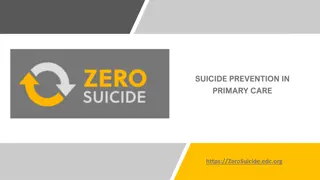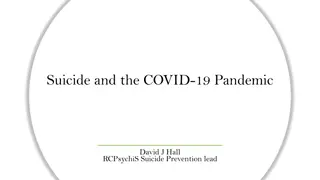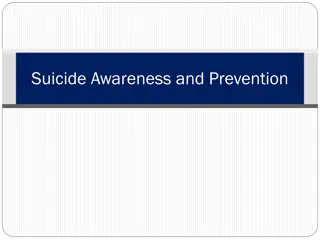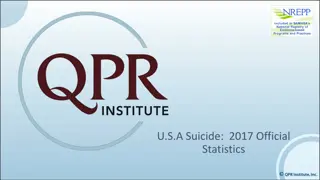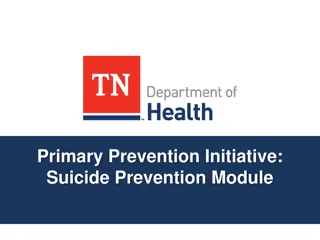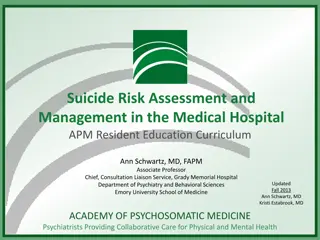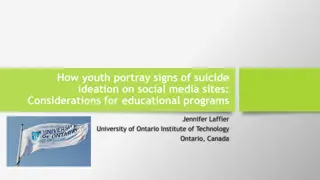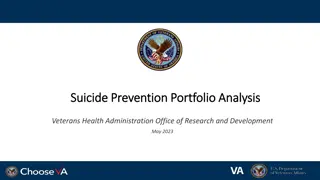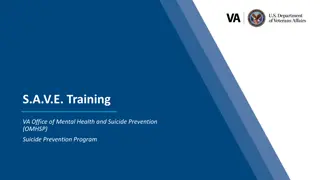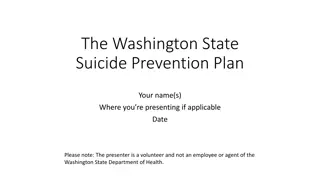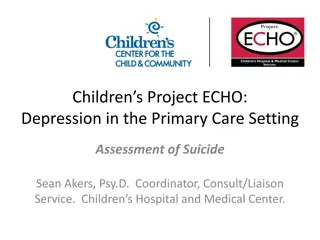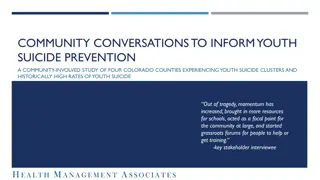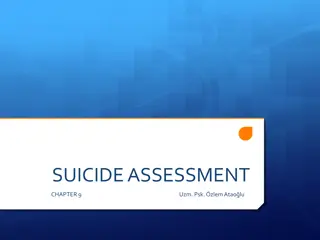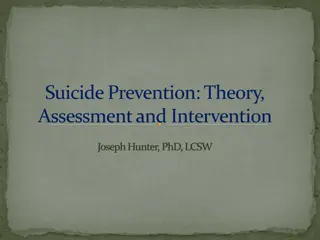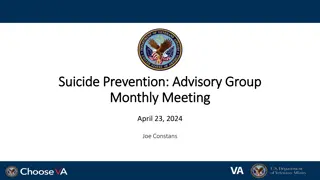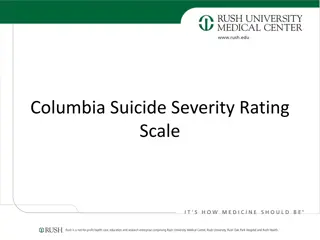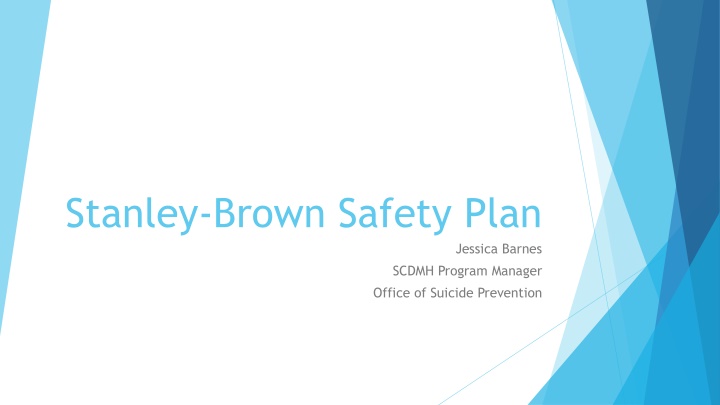
Collaborative Safety Planning for Suicide Prevention
Learn about collaborative safety planning for suicide prevention, which involves recognizing warning signs, internal coping strategies, identifying distractors, and contacting friends or family for help. Suicide exists on a continuum, and we all need to be prepared to support those at risk. Be proactive in emotional safety planning by involving all parties in the process.
Download Presentation

Please find below an Image/Link to download the presentation.
The content on the website is provided AS IS for your information and personal use only. It may not be sold, licensed, or shared on other websites without obtaining consent from the author. If you encounter any issues during the download, it is possible that the publisher has removed the file from their server.
You are allowed to download the files provided on this website for personal or commercial use, subject to the condition that they are used lawfully. All files are the property of their respective owners.
The content on the website is provided AS IS for your information and personal use only. It may not be sold, licensed, or shared on other websites without obtaining consent from the author.
E N D
Presentation Transcript
Stanley-Brown Safety Plan Jessica Barnes SCDMH Program Manager Office of Suicide Prevention
Suicidality exists on a continuum and frankly, we re all on that continuum somewhere. Some of us are just actually closer to a suicide death than others. But in many ways, we are all a few life experiences away from a major mental health crisis weather we like to admit it or not. - Beeson
Collaborative Safety Planning All patients are at risk for suicide Think of it as emotional safety planning When appropriate all parties on the plan should be involved with the planning
Parts of a safety plan: Recognizing warning signs Things to ask your patient: How do you know a crisis is forming? What do you notice about yourself when you feel __________________. What was the situation like the last time you were in a crisis? Ask specifically about thoughts, images, moods, situations, and behaviors they believe may be a trigger for them. If a family member/friend/partner is present ask them if they notice any behavior or mood changes before the patient has a crisis.
Parts of a safety plan: Internal Coping strategies Must be things the patient can do on their own. Things to ask: What are things you enjoy doing? What do you do to feel relaxed? When do you notice you are feeling calm/happy/peaceful? What coping strategies do you enjoy doing? It is okay to provide examples It must be something the patient knows how to do and will do
Parts of a safety plan: Identify distractors These are people, places, or things that are a distraction The patient will not be discussing their SI or Crisis situation at this point in the safety plan Things to ask: Who do you enjoy talking to? Where is a public place you can go to in a crisis? Ex: coffee shops, grocery store, mall, park, etc. What things are distracting for you? A store you are willing to call to ask about an item?
Parts of a safety plan: Contact friends or family for help These have to be people the patient is willing to talk to about their SI or crisis. This is not the place to include professionals Two things to consider when putting someone on the PSP: Is the person someone that is readily available? Does this person live close by? Call the people on a safety plan with the patient and inform them of their role. As the MHP you can answer any of their questions.
Parts of a safety plan: Contact Professionals and Agencies Include first and last name Other agencies to include: Mobile Crisis: 833-364-2274 Suicide and Crisis Lifeline 988 National Suicide Prevention text line 741-741 (Text HOPE4SC)
Parts of a safety plan: Reduce access to lethal means Access to lethal means must be removed from the home immediately following a safety plan. Inform the patient that you will call them and one other person to make sure the lethal mean was removed from the home. If and ONLY if the item can not be removed from the home get creative Making medications hard to reach Putting belts away from view Locking all kitchen knives Putting photos of loved ones in front of medicine, weapons, car keys, or any other item the patient identifies as lethal.
Parts of a safety plan: Final steps Print multiple copies for the patient (one to carry on them, one for the car, one on the fridge, one by the bed) If the patient is stable still continue to review the safety plan Always review the safety plan: After a crisis After transitions Every three months When there is an expected trigger When the patient reports SI Discussed what worked and what did not work
Stanley-Brown Information You must receive written permission to change the form or use it in the electronic medical record. Contact - Stanley-Brown Safety Planning Intervention Additional Training can be found below: - Stanley-Brown Safety Planning Intervention

